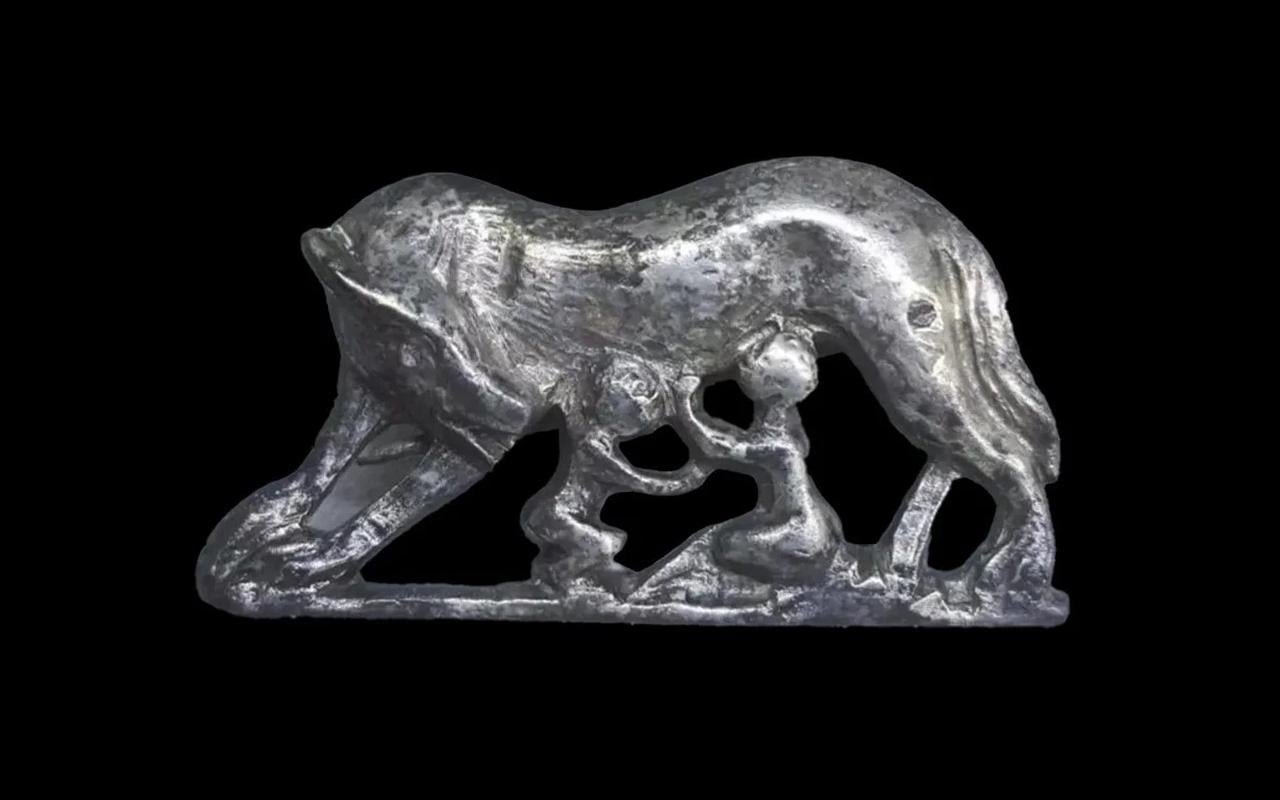The Department of Culture of the Generalitat Valenciana has recently announced the discovery of a rare silver brooch, depicting the iconic scene of Romulus and Remus being suckled by a she-wolf.
 Credit: The Department of Culture of the Generalitat Valenciana
Credit: The Department of Culture of the Generalitat Valenciana
This remarkable artifact was discovered during excavations at Vilanova d’Alcolea, a site in Spain believed to have served as an ancient postal building during the Roman era. Archaeologists, led by Josep Carbó, made the discovery, describing it as an exceptional piece both for its rarity and quality.
Romulus and Remus, pivotal figures in Roman mythology, were twin brothers whose legendary tale forms the foundation myth of Rome and the Roman Kingdom. Born in Alba Longa to Rhea Silvia, the twins were the grandsons of the deposed King Numitor. Threatened by their potential claim to power, King Amulius, Numitor’s brother, ordered the infants to be abandoned on the banks of the Tiber River.
Legend has it that the twins were saved by a she-wolf who nursed them in a cave known as Lupercal, situated at the southwestern foot of the Palatine Hill in Rome. Upon discovering their true heritage, Romulus and Remus avenged their family and reinstated their grandfather, Numitor, as the rightful king. However, their story took a tragic turn when a dispute arose between the brothers, leading to Romulus committing fratricide against Remus. Romulus then went on to establish the city of Rome, solidifying his position as its first ruler.
The silver brooch, measuring 4 centimeters in size and dating back to the 2nd century CE, portrays the iconic scene of the she-wolf nurturing the twins in their infancy. This depiction has become synonymous with the founding of Rome since the 3rd century BCE.
The archaeological site where the brooch was discovered holds additional significance. Situated near the Via Augusta, the longest Roman road in Roman Hispania, the site is believed to have been an official post of the Roman Empire, catering to officials and travelers alike. The proximity to this historic route enhances the importance of the find.
Archaeologist, Josep Carbó, emphasized the significance of the discovery, stating, “It is an exceptional piece due to its rarity and quality since there are very few pieces of this type that have been studied.”





